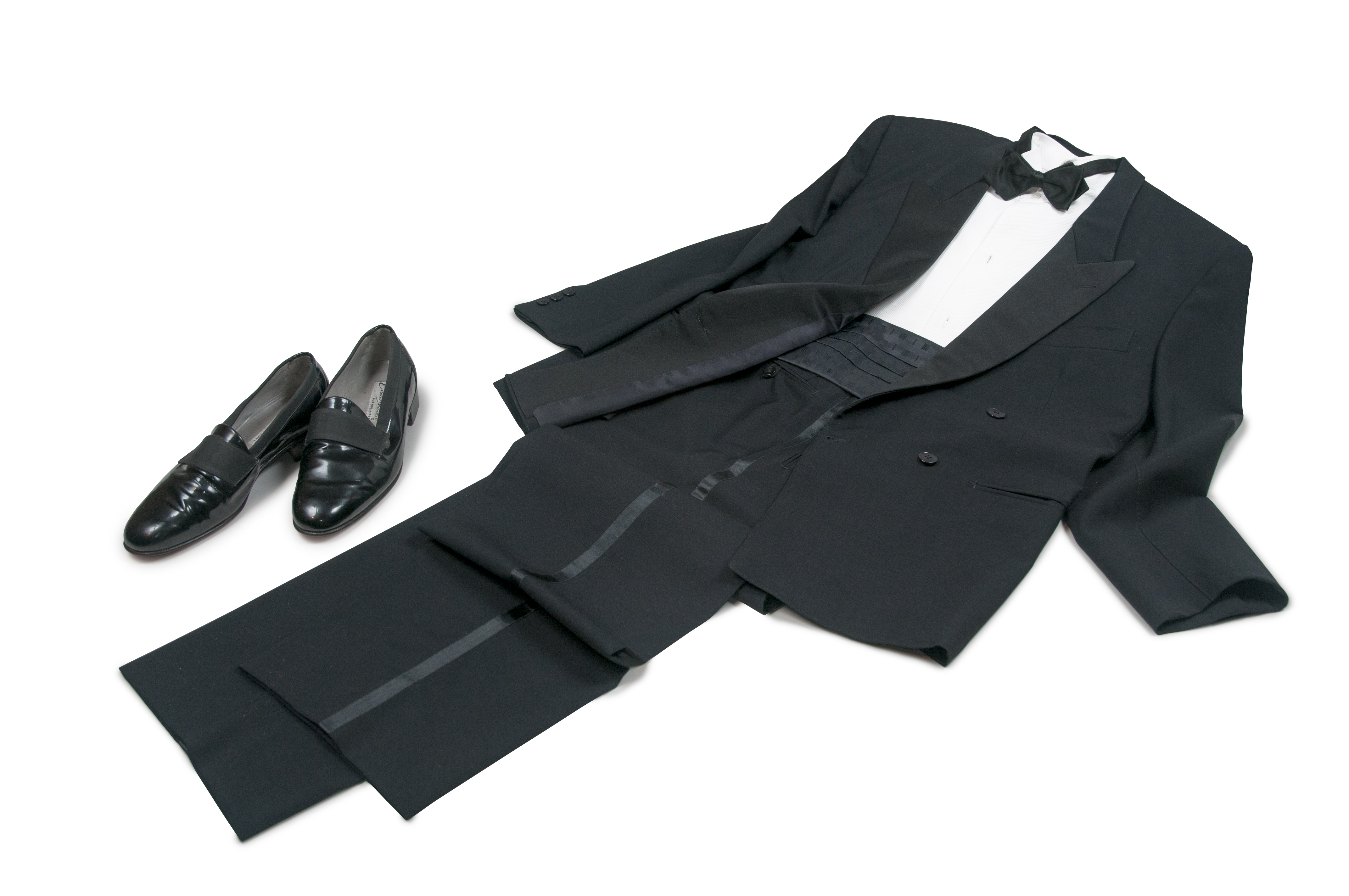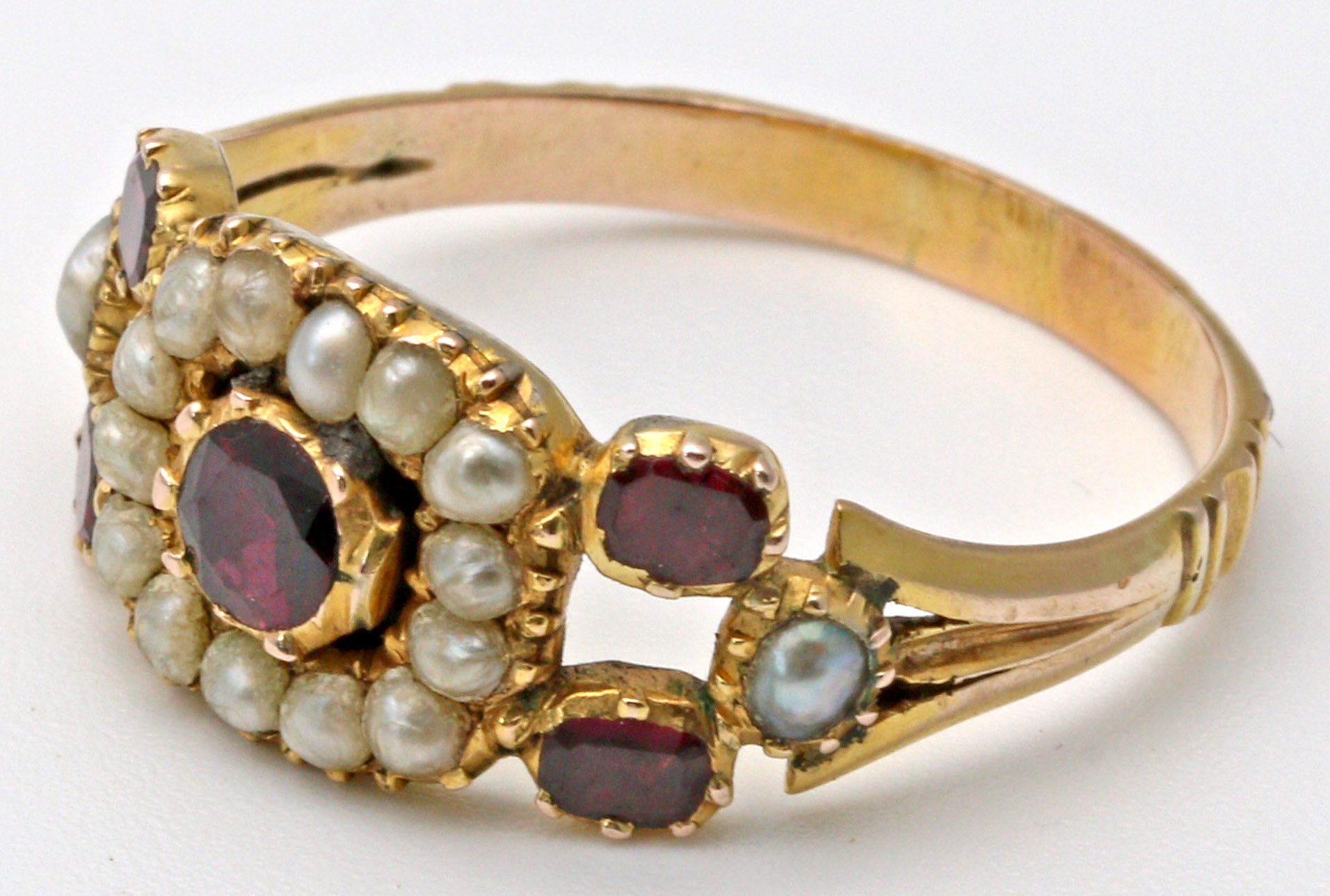|
Cufflinks
Cufflinks are items of jewelry that are used to secure the cuffs of dress shirts. Cufflinks can be manufactured from a variety of different materials, such as glass, stone, leather, metal, precious metal or combinations of these. Securing of the cufflinks is usually achieved via toggles or reverses based on the design of the front section, which can be folded into position. There are also variants with chains or a rigid, bent rear section. The front sections of the cufflinks can be decorated with gemstones, inlays, inset material or enamel and designed in two or three-dimensional forms. Cufflinks are designed only for use with shirts that have cuffs with buttonholes on two sides but no buttons. These may be either single or double-length ("French") cuffs, and may be worn either "kissing", with both edges pointing outward, or "barrel-style", with one edge pointing outward and the other one inward so that its hem is overlapped. In the US, the "barrel-style" was popularized by ... [...More Info...] [...Related Items...] OR: [Wikipedia] [Google] [Baidu] [Amazon] |
Dress Shirt
A dress shirt, button shirt, button-front, button-front shirt, or button-up shirt is a garment with a Collar (clothing), collar and a full-length opening at the front, which is fastened using buttons or shirt studs. A button-down or button-down shirt is a dress shirt with a button-down collar – a collar having the ends fastened to the shirt with buttons. A dress shirt is normally made from woven cloth, and is often accompanied by a Necktie, tie, jacket, suit (clothing), suit, or formalwear, but a dress shirt may also be worn more casually. In British English, "dress shirt" ("formal shirt" or "tuxedo shirt" in American English) means specifically the more formal evening garment worn with black tie, black- or white tie, white-tie. Some of these formal shirts have stiff fronts and detachable collars attached with collar studs. History Traditionally dress shirts were worn by men and boys, whereas women and girls often wore blouses, sometimes known as chemises. However, in the ... [...More Info...] [...Related Items...] OR: [Wikipedia] [Google] [Baidu] [Amazon] |
Black Tie
Black tie is a semi-formal Western dress code for evening events, originating in British and North American conventions for attire in the 19th century. In British English, the dress code is often referred to synecdochically by its principal element for men, the dinner suit or dinner jacket. In American English, the equivalent term tuxedo (or tux) is common. The dinner suit is a black, midnight blue or white two- or three-piece suit, distinguished by satin or grosgrain jacket lapels and similar stripes along the outseam of the trousers. It is worn with a white dress shirt with standing or turndown collar and link cuffs, a black bow tie, sometimes an evening waistcoat or a cummerbund, and black patent leather dress shoes or court pumps. Accessories may include a semi-formal homburg, bowler, or boater hat. In Britain, some individuals may rebel from the formal dress code by wearing coloured socks or a bow tie that is not black, such as red. For women, an evening gow ... [...More Info...] [...Related Items...] OR: [Wikipedia] [Google] [Baidu] [Amazon] |
French Cuff
A cuff is a layer of fabric at the lower edge of the sleeve of a garment (shirt, coat, jacket, etc.) at the wrist, or at the ankle end of a trouser leg. The function of turned-back cuffs is to protect the cloth of the garment from fraying, and, when frayed, to allow the cuffs to be readily repaired or replaced, without changing the garment. Cuffs are made by turning back (folding) the material, or a separate band of material can be sewn on, or worn separately, attached either by buttons or studs. A cuff may display an ornamental border or have lace or some other trimming. In US usage, the word ''trouser cuffs'' refers to the folded, finished bottoms of the legs of a pair of trousers. In the UK, while this usage is now sometimes followed, the traditional term for the turned up trouser hem is 'turnup'. History Between the 15th and 18th centuries, rich men often wore sleeve cuffs ornamented with fine lace. Catholic clergy have the cuffs of their choir dress ornamented with fin ... [...More Info...] [...Related Items...] OR: [Wikipedia] [Google] [Baidu] [Amazon] |
Morning Dress
Morning dress, also known as formal day dress, is the Formal attire, formal Western dress code for day wear (other), day attire, consisting chiefly of a morning coat, waistcoat, and formal trousers for men, and an appropriate gown for women. Men may also wear a popular variant, where all parts (morning coat or waistcoat, and trousers) are the same colour and material, often grey, and usually called "morning suit" or "morning grey" to distinguish it; considered properly appropriate only to festive functions, such as summer weddings and horse races, which consequently makes it slightly less formal. The correct hat would be a formal top hat, or if on less spacious audience settings, optionally a collapsible equivalent opera hat. Debrett's states that morning dress should not be specified as the dress code for events starting after 6 p.m. If a formal event will commence at or after 6 p.m., white tie should be specified instead. The semi-formal daytime counterpart ... [...More Info...] [...Related Items...] OR: [Wikipedia] [Google] [Baidu] [Amazon] |
Belt Buckle
A belt buckle is a buckle, a clasp for fastening two ends, such as of straps or a belt (clothing), belt, in which a device attached to one of the ends is fitted or coupled to the other. The word enters Middle English via Old French and the Latin ''buccula'' or "cheek-strap," as for a helmet. Belt buckles and other fixtures are used on a variety of belts, including Cingulum militare, cingula, Baldric#Roman balteus, baltea, baldrics and later waist-belts. Types Belt buckles go back at least to the Iron Age and a gold "great buckle" was among the items interred at Sutton Hoo. Primarily decorative "shield on tongue" buckles were common Anglo-Saxon grave goods at this time, elaborately decorated on the "shield" portion and associated only with men. One such buckle, found in a 7th-century grave at Finglesham Anglo-Saxon cemetery, Finglesham, Kent during excavations by Sonia Chadwick Hawkes in 1964 bears the image of a Nudity in combat, naked warrior standing between two spears ... [...More Info...] [...Related Items...] OR: [Wikipedia] [Google] [Baidu] [Amazon] |
Shirt Studs
A shirt stud is a decorative fastener that fits onto a buttonhole on the front of a pleated shirt, or onto the starched bib of a stiff-front shirt. Such shirts have special buttonholes solely for shirt studs. Details A shirt stud may be fashioned from alloys, precious metals, and gemstones—materials uncommon to buttons sewn on shirts. The stud may have an inlay, such as of pearl or onyx. Dress code of the modern western world reserves shirt studs for men's formal wear and some semi-formal occasions. In the western world, shirt studs were first used in the mid-19th century, when some shirt fronts were too stiff to close with buttons. So remains the case for the heavily starched, modern full dress shirts worn with white tie. See also * Bachelor button (sewing) * Stonesetting * Tie pin A tie pin (or tiepin, also known as a stick pin/stickpin) is a neckwear-controlling device, originally worn by wealthy English gentlemen to secure the folds of their cravats. History Tie ... [...More Info...] [...Related Items...] OR: [Wikipedia] [Google] [Baidu] [Amazon] |
Pearl
A pearl is a hard, glistening object produced within the soft tissue (specifically the mantle (mollusc), mantle) of a living Exoskeleton, shelled mollusk or another animal, such as fossil conulariids. Just like the shell of a mollusk, a pearl is composed of calcium carbonate (mainly aragonite or a mixture of aragonite and calcite) in minute crystalline form, which has deposited in concentric layers. More commercially valuable pearls are perfectly round and smooth, but many other shapes, known as baroque pearls, can occur. The finest quality of natural pearls have been highly valued as gemstones and objects of beauty for many centuries. Because of this, ''pearl'' has become a metaphor for something rare, fine, admirable, and valuable. The most valuable pearls occur spontaneously in the wild but are extremely rare. These wild pearls are referred to as ''natural'' pearls. ''Cultured'' or ''farmed'' pearls from Pinctada, pearl oysters and freshwater mussels make up the majority o ... [...More Info...] [...Related Items...] OR: [Wikipedia] [Google] [Baidu] [Amazon] |
Watch
A watch is a timepiece carried or worn by a person. It is designed to maintain a consistent movement despite the motions caused by the person's activities. A wristwatch is worn around the wrist, attached by a watch strap or another type of bracelet, including metal bands or leather straps. A pocket watch is carried in a pocket, often attached to a chain. A stopwatch is a type of watch that measures intervals of time. During most of their history, beginning in the 16th century, watches were mechanical devices, driven by clockwork, powered by winding a mainspring, and keeping time with an oscillating balance wheel. These are known as '' mechanical watches''. In the 1960s the electronic ''quartz watch'' was invented, powered by a battery and keeping time with a vibrating quartz crystal. By the 1980s it had taken over most of the watch market, in what became known as the quartz revolution (or the quartz crisis in Switzerland, whose renowned watch industry it decima ... [...More Info...] [...Related Items...] OR: [Wikipedia] [Google] [Baidu] [Amazon] |
Sartorial
{{Short pages monitor ... [...More Info...] [...Related Items...] OR: [Wikipedia] [Google] [Baidu] [Amazon] |
Tie Bar
A tie clip (also tie slide, tie bar, or tie clasp) is a clothing accessory that is used to clip a tie to the underlying shirt A shirt is a cloth garment for the upper body (from the neck to the waist). Originally an undergarment worn exclusively by men, it has become, in American English, a catch-all term for a broad variety of upper-body garments and undergarments. ... front, preventing it from swinging and ensuring that the tie hangs straight, resulting in a neat, uniform appearance. The use of tie clips gained prominence during the 1920s, during which period the use of straight ties made of delicate materials such as silk became more fashionable, and they largely came to replace the more traditional tie pin. Tie clips are commonly made of metal and often have decorative patterns or embellishments. Some clips have a small badge indicating membership to a club or some other affiliation, or some other commemorative token, in a similar manner to the way in which ties ... [...More Info...] [...Related Items...] OR: [Wikipedia] [Google] [Baidu] [Amazon] |
Ring (jewellery)
A ring is a round band, usually made of metal, worn as ornamental Jewellery, jewelry. The term "ring" by itself denotes jewellery worn on the finger; when worn as an ornament elsewhere, the body part is specified within the term, e.g., earrings, neck rings, arm rings, and toe rings. Rings fit snugly around or in the part of the body they Ornament (art), ornament, so bands worn loosely, like a bracelet, are not rings. Rings may be made of almost any hard material: wood, bone, rock (geology), stone, metal, glass, jade, gemstone or plastic. They may be set with gemstones (diamond, ruby, sapphire or emerald) or with other types of stone or glass. Although some people wear rings as mere ornaments or as conspicuous displays of wealth, rings have symbolic functions respecting marriage, exceptional achievement, high status or authority, membership in an organization, and the like. Rings can be made to sport insignia which may be impressed on a wax seal or outfitted with a small compartmen ... [...More Info...] [...Related Items...] OR: [Wikipedia] [Google] [Baidu] [Amazon] |








